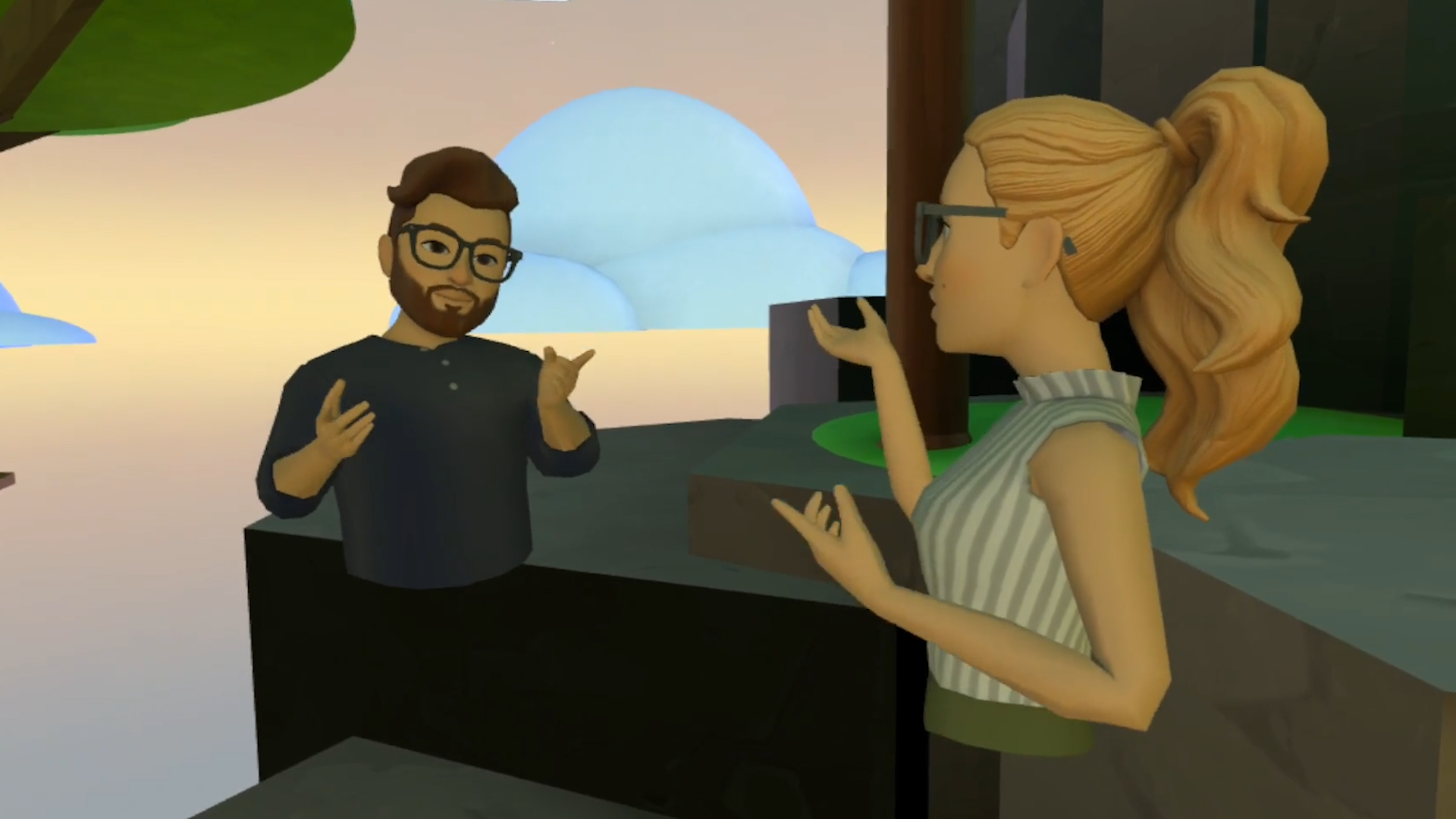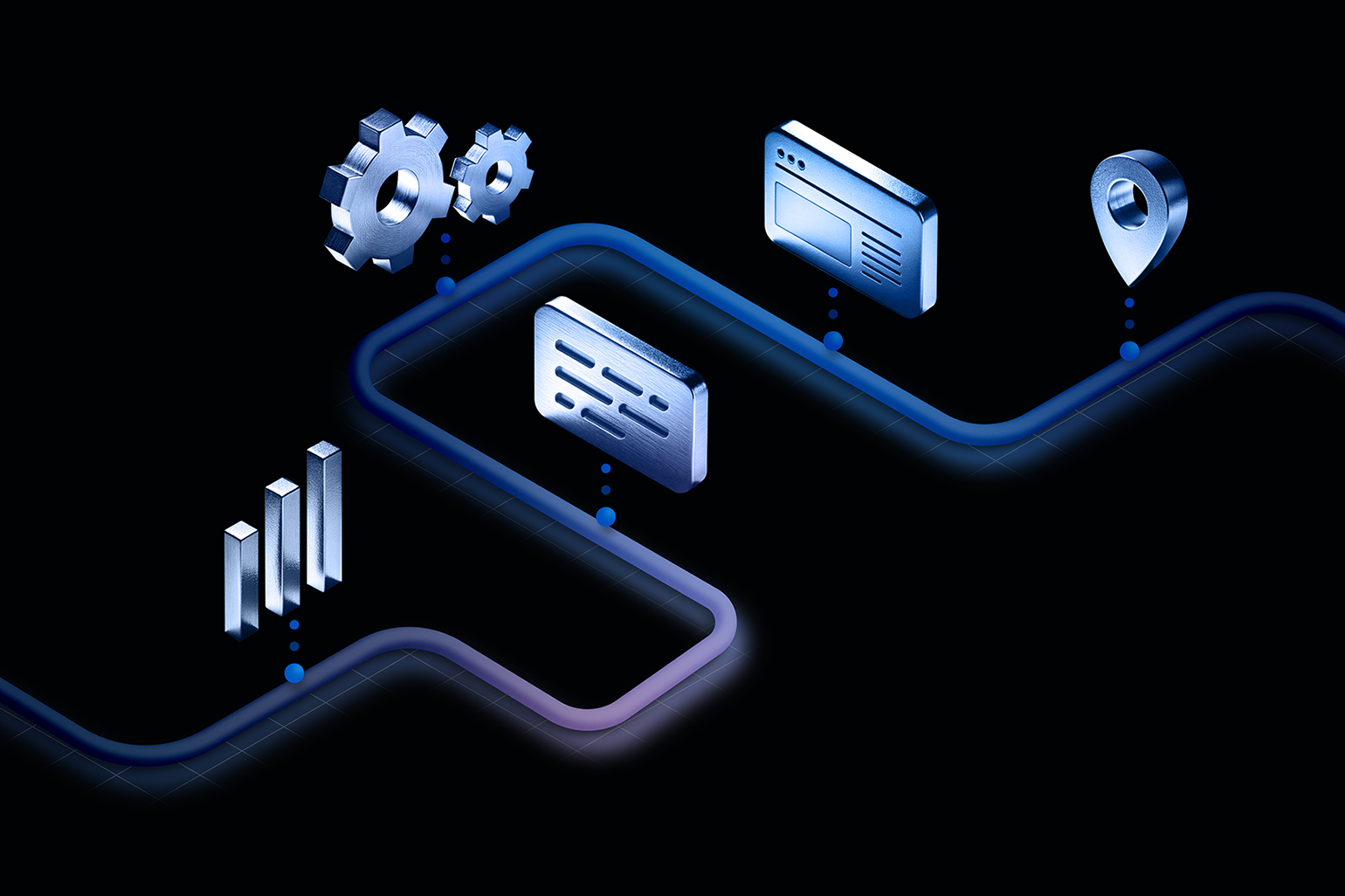Leveraging Immersive Technology to Benefit Our Creativity
NJI recently interviewed boundary-breaking futurist, and NJI Vice President of Interactive Media, Ryan Raybould on the future of immersive technology. Ryan’s insatiable curiosity drives NJI’s video and events teams to create entirely new frontiers for collaboration between our creative and technical teams.

Q: What work is NJI doing in the 3D & virtual reality space?
A: NJI began exploring 3D modeling and the realm of virtual reality in 2019 as an expansion of our design and video capacity. The additional dimension encouraged the development of exciting new skillsets in multimedia, static 3D, and other work in that suite. Video and 3D skills have a lot of overlap, and because of my 3D background, it was something that I was keen to introduce to NJI when I joined. It was a capacity that we didn’t yet have and, luckily, leadership saw it as an area that was worth expanding. Because we’ve been building that skillset for a few years and we saw it as a necessity for our future video work, we’ve been in a good position to apply that knowledge as the idea of the metaverse takes off.
As an early internal project, we created a 3D version of the NJI office to a 1:1 scale as a showcase of the early photorealism work that we could do. And then we took that a couple of steps further by fully integrating it into VR. We could put people in headsets and have them walk around and interact with our office. When they’re actually in our office and then put on a headset, it’s incredibly accurate. That’s the wow effect that 3D modeling can really achieve.
Q: Where are VR and metaverse-related technologies heading?
A: People are assessing the gold standard software for VR development, whether it’s Unity, Unreal Engine, or one of the branded platforms. The jury is still out on where we’ll land there and what the work environment will look like moving forward. Will we be working more in headsets to create this content, or will it still be that you do it in a more traditional way on the desktop-based software and then execute it into VR? We’re really excited about where it’s going to go.
When we think about VR now, the majority of headsets are big and clunky. It’s not uncommon for people to get motion sickness. We’re very early in the journey of making these products really consumer-focused. If everyone’s honest about it, for the last 10 years, they haven’t been refined into a truly functional consumer product. Compare it to the phone rollout. We had the big Nokias for a long time before we got to the smartphones that we use today. But once we work out ways to get these headsets even more compact, I think it’s going to be incredibly accessible. It’ll change the landscape significantly.
Q: How can the metaverse foster greater connectedness?
A: Everyone is hell-bent on VR and its potential disruption to communities. While we might have more people immerse themselves in gameplay, we also will have a whole new community that’s going to be created that can actually connect people in a way that will help the world grow and prosper.
I think this is a medium that’s going to need champions to push the message in the right way. I think there’s always going to be a lot of competing agendas in AR and VR, and I think it’s on us to help shape that narrative so that people can see the benefits that the infrastructure will help bring. If you look at the way the internet rolled out, yes, there are a bunch of negatives that came with it, but there’s a whole lot of positivity around the connectivity it has brought us. We’re a more connected world than we’ve ever been, and that’s brought a huge value to the sharing of knowledge.
I think we can spotlight the way these technologies will enhance the world, and our agency’s role can be helping to share that knowledge, get it to the right areas, and use the tool for the right reasons. What is the net value of doing this in AR or VR? How are we contributing toward the right connected community with the work that we’re doing? We shouldn’t just be pushing VR and AR because it’s the cool next thing, but because it’s the best next thing for reaching a target audience and communicating an idea.
Q: What do you see as compelling uses for AR and VR technology?
A: A lot of policymaking is about telling very complex stories as simply as possible. By knowing how to bring the right touchpoints in, VR and AR offer a very unique way to convey that story. I encourage our clients to explore this with us because I think that there’s going to be a lot of opportunity for value and wins along the way.
What VR and AR provide is a unique ability to tell really complex stories in a new way that a lot of people have never experienced. From a VR perspective, you’ve got this additional depth that you can explore. You’re not limited by the 2D screen, and you’re not limited by having to use a cursor. All those different dimensions enable you to be able to tell stories in a very different ways. And I think what we bring at NJI is that unique experience of having been in this space for quite a bit of time and understanding the nuances of the new elements of VR or AR (like picking up a virtual object or seeing graphics overlaid the real world) mean to the storytelling aspect.
An area that really excites me from a humanitarian perspective is using haptics in AR and VR, so you can have robotic limbs that could be remotely activated and utilized through the use of AR. We’re seeing that used already in surgery in remote areas. Someone who is trained in a particular type of surgery can jump into a headset wherever they’re based and perform surgery remotely using a robot with a trained operator.
It will be useful for things like training and occupational health and safety. Even in a restaurant kitchen, new chefs could have prompts that could come up in a headset to help train them, like “That’s not quite enough; put a little more salt on it.” It helps train people in real-time and build those skills. There are so many ways that AR in particular can be applied.

